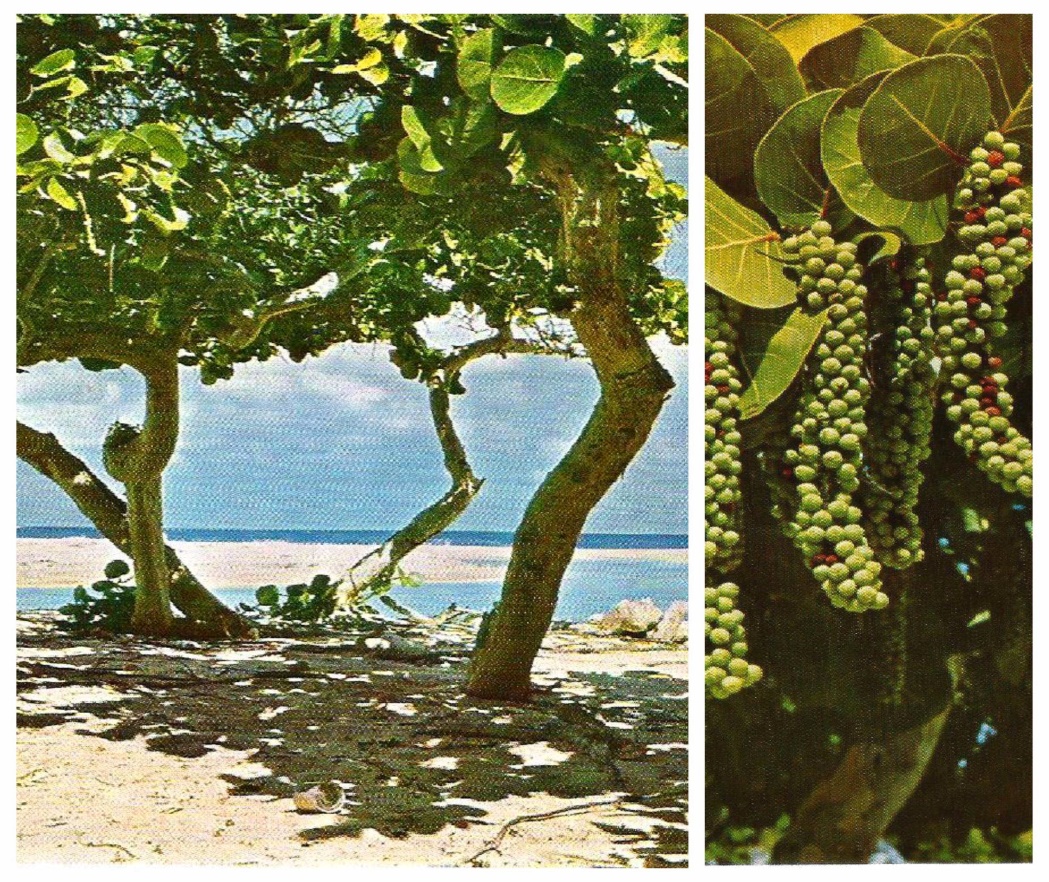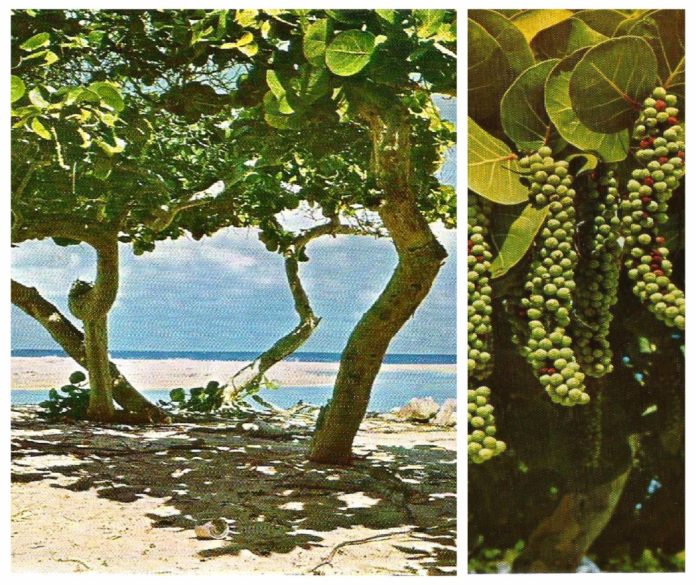Booking a magical glimpse inside Etnia Nativa
Article by Etnia Nativa call us 592 2702 and book your experience!
Each week, Island Insight shares with you a story of Aruba through the eyes of Etnia Nativa, where we welcome our guests to an island experience far beyond their usual expectations. The native ethnicity engages you with the mystical aspects of the island, its original culture and its traditional colonial heritage.
During this episode, we will share valuable information regarding a plant known locally as “Druif di Lama”, which translates in English as Sea grape. Classified as (Coccoloba uvifera), a tree that used to be highly valued for its fruits since ancient times by our native Arubans as well as our traditional shipbuilders who appreciated its resistant wood.

The sea grape is a plant belonging to the Polygonaceae family. Although the native belief is that the plant attracts termites, However if you take good care of it, not necessarily it infected with them. Found on the coastal beaches all around the Caribbean islands and from Brazil to Florida, including beaches of Peru. While it is widely cultivated in the Philippines, growing wild in Hawaii.
Before the coastal area of Aruba were plagued by construction, it was common to see large quantities of Sea Greape trees, while currently reduced to a few beache’s and bocas in National Park areas. In some places the Sea Greape are kept short to form hedge between roads. An interesting experiment and a way of planting and caring for woody plants that grow together, and hlods the soil. “Druif di lama” is a prefect tree type for many Aruban gardens. For its great wind resistance and good growth along the coast. Gives great shadow and deliciouse fruits The periodic salty wind partially burns the thick leaves but it doesn’t kill the tree.
Sea grape grows quickly with irrigation. It has few problems with diseases or pests. Sometimes insects appear on young leaves, causing them to become deformed and partially dry.
However as a tree, it produces edible “white” or “red” fruits, which contains a fruit covered seed. It is an evergreen tree and drought resister over long periods. It can reach heights up to 15 m. It is a deeply branched and dioecious, with a short trunk, wide crown, and often horizontal branches. The alternately arranged leaves are light green with often red veins, firm, leathery, hard, rounded, wide, heart-shaped, short-stemmed, and up to about 25 cm wide. Before falling, the leaf turns yellow to red. The small, creamy-white flowers have no separate petals or sepals, them grows in numbers of twenty to fifty in terminal clusters up to 30 cm long.
The fruits, are up to 2 cm in size, are round or pear-shaped and ripe violet-red or light green and them do not ripen at the same time within a cluster and must therefore be picked separately. Under the thin, opaque skin is a layer of juicy, glassy, reddish, purple, or sometimes greenish-white pulp, up to 3 mm thick. The pulp has a sweet and sour taste. The pulp encloses a whitish, hard, woody, egg-shaped seed, up to 1.5 cm in size. The fruits can be consumed as hand fruit or in compote, jam, jelly, and juice. Certain places in the Caribbean make fruit wine from their grapes. For the production of wine, as the pulp of each grape is very limited since it has a large seed, the grapes are lightly boiled and then squeezed in a very artisanal process, adding water, sugar, and yeast, and letting it rest for 24 hours in a warm place. After a few days of fermentation, it will be necessary to check the sugar content in order to bottle it and let it age for no less than two months.
On Aruba, the Sea grape’s wood, being an extremely resistant material, was used for the artisanal construction of the keel of boats, which is the flat and elongated structure located at the bottom of the boat’s hull and is commonly defined as the boat’s vertebral column as it is essential for its stability and control.
If knowing more about Aruba is on your itinerary, Etnia Nativa is your only choice—a unique native gem! Let Anthony, our acclaimed cultural columnist, guide and lecture you regarding the most interesting and revealing stories regarding Aruba’s uncovering knowledge acquired through generations of native ethnic presence, an beyond beaches learning adventure. Visit his magnificent dwelling that integrates reused materials with nature, bursting with culture and island heritage! Whats App +297 592 2702 etnianativa03@gmail.com

















